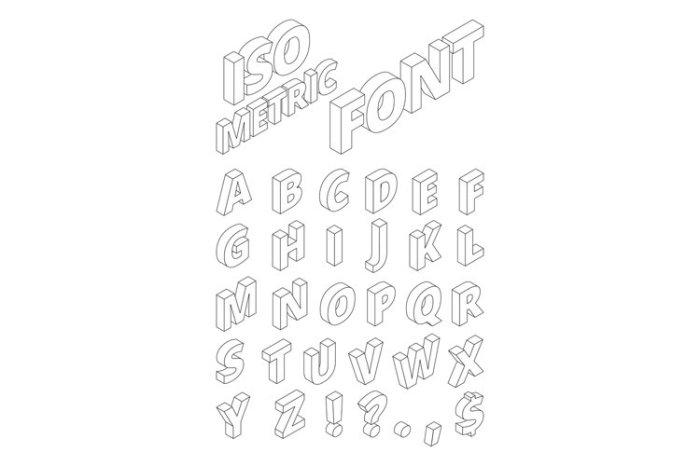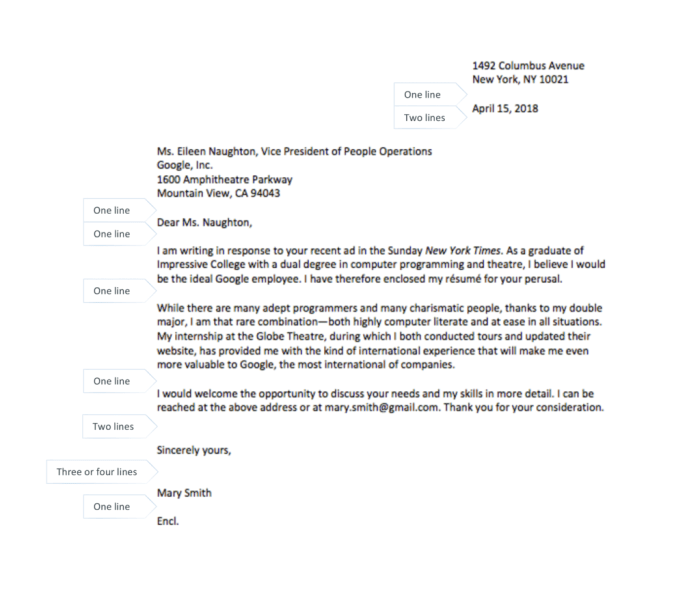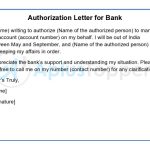Contoh Surat Resmi dalam Bahasa Inggris: Panduan Lengkap dan Praktis
Contoh surat resmi dalam bahasa Inggris adalah topik yang penting untuk dipelajari, terutama dalam berbagai situasi formal. Dalam panduan ini, Anda akan mempelajari struktur dasar dan format surat resmi, serta jenis-jenis surat resmi yang umum digunakan. Mari kita jelajahi dunia surat resmi dalam bahasa Inggris dan tingkatkan keterampilan menulis formal Anda!
Introduction to Formal Letters
Formal letters are an important form of communication used in various situations. They are widely used in business, education, and government sectors, among others. Formal letters provide a professional and structured way to convey information, make requests, or express concerns.
The purpose of writing a formal letter can vary depending on the situation. It can be used to request information or clarification, make a complaint, apply for a job or admission, express gratitude, or provide feedback. The formal nature of these letters adds credibility and seriousness to the communication.
Examples of Situations that Require a Formal Letter
- Applying for a job or internship
- Writing a complaint to a company or organization
- Requesting information from a government agency
- Submitting a formal report or proposal
- Expressing condolences or congratulations
These are just a few examples of situations where a formal letter is necessary. In each case, a formal letter provides a clear and structured way to communicate the intended message.
Basic Structure and Format of a Formal Letter
A formal letter typically follows a specific structure and format. It includes the sender’s address, date, recipient’s address, salutation, body paragraphs, and closing. The language used in a formal letter is professional, respectful, and concise.
The structure of a formal letter is as follows:
- Sender’s address: Include the sender’s name, address, and contact information.
- Date: Write the date when the letter is being sent.
- Recipient’s address: Include the recipient’s name, title, organization, and address.
- Salutation: Begin the letter with a formal greeting, such as “Dear Mr./Ms./Dr. [Last Name]”.
- Body paragraphs: Clearly and concisely state the purpose of the letter in paragraphs. Use formal language and provide necessary details or information.
- Closing: End the letter with a formal closing, such as “Sincerely” or “Yours faithfully”.
- Signature: Sign the letter with your name and title (if applicable).
Following this structure ensures that the formal letter is organized and professional.
Use of Formal Language and Tone in a Formal Letter
In a formal letter, it is important to use formal language and maintain a professional tone. Avoid slang, abbreviations, or casual expressions. Use respectful and polite language throughout the letter.
Additionally, it is crucial to be concise and clear in your communication. Use proper grammar, punctuation, and sentence structure. Avoid unnecessary jargon or technical terms unless they are relevant and understood by the recipient.
By using formal language and tone, you can convey professionalism and effectively communicate your message in a formal letter.
Components of a Formal Letter: Contoh Surat Resmi Dalam Bahasa Inggris

A formal letter consists of several components that help organize and structure the information being conveyed. These components include:
- The sender’s address: This is the address of the person or organization sending the letter. It is usually placed at the top right corner of the letter.
- The date: The date on which the letter is being written is important for record-keeping purposes. It is typically written below the sender’s address.
- The recipient’s address: This is the address of the person or organization to whom the letter is being sent. It is usually placed below the date.
- The salutation: The salutation is the greeting that is used to address the recipient of the letter. It is typically followed by a colon or comma.
- The body: The body of the letter contains the main content or message. It should be clear, concise, and organized into paragraphs.
- The closing: The closing is a polite way to end the letter. It is usually followed by a comma or colon.
- The signature: The signature is the name of the person or organization sending the letter. It should be handwritten or typed below the closing.
It is important to include contact information in a formal letter so that the recipient can easily get in touch with the sender if needed. This can include phone numbers, email addresses, or any other relevant contact details.
Appropriate Salutations and Closings
The choice of salutation and closing in a formal letter depends on the relationship between the sender and the recipient, as well as the purpose of the letter. Here are some examples of appropriate salutations and closings:
| Situation | Salutation | Closing |
|---|---|---|
| Formal business letter | Dear Mr./Ms./Dr. [Last Name] | Sincerely, |
| Letter to a friend | Dear [Friend’s Name] | Best regards, |
| Letter to a colleague | Dear [Colleague’s Name] | Yours sincerely, |
In a formal letter, it is important to use proper grammar, spelling, and punctuation. This helps to ensure that the letter is professional and easy to read. It is also important to be clear and concise in the body of the letter.
Avoid using unnecessary jargon or complex language, and make sure to organize the information in a logical and coherent manner.
By following these guidelines, you can create a well-structured and effective formal letter that conveys your message clearly and professionally.
Types of Formal Letters

Formal letters are written for official or professional purposes. There are various types of formal letters that serve different purposes and require specific language and tone. Understanding the different types of formal letters can help ensure effective communication in various situations.
Letters of Complaint, Contoh surat resmi dalam bahasa inggris
Letters of complaint are written to express dissatisfaction or to raise concerns about a product, service, or situation. These letters usually Artikel the issue, provide relevant details, and suggest a resolution. For example, a customer may write a letter of complaint to a company about a faulty product and request a refund or replacement.
Letters of Inquiry
Letters of inquiry are written to gather information or seek clarification on a particular topic. These letters are often used in business or academic settings. For instance, a student may write a letter of inquiry to a university to inquire about admission requirements or scholarship opportunities.
Letters of Recommendation
Letters of recommendation are written to vouch for the abilities, skills, or character of an individual. These letters are commonly used for job applications, college admissions, or professional references. A letter of recommendation typically highlights the strengths and qualifications of the person being recommended.
For example, an employer may write a letter of recommendation for a former employee who is applying for a new job.
Letters of Resignation
Letters of resignation are written to formally announce the intention to leave a job or position. These letters typically state the reasons for resigning and provide a notice period. It is important to maintain a professional tone and express gratitude towards the employer or organization.
For instance, an employee may write a letter of resignation to their supervisor to resign from their current position and move on to a new opportunity.Each type of formal letter requires a specific language and tone. It is important to be polite, clear, and concise in your writing.
Avoid using informal language or slang. Additionally, consider any additional components or considerations that may be required for specific types of formal letters, such as supporting documents or formal formatting.Remember, formal letters are an important means of communication and should be approached with professionalism and respect.
Writing Tips for Formal Letters
Writing a formal letter can be a daunting task, especially if you are not familiar with the format and tone. In this article, we will provide you with some useful tips and guidelines to help you write an effective formal letter.
The Importance of Politeness and Respect
When writing a formal letter, it is important to maintain a polite and respectful tone throughout the letter. This includes using appropriate language and avoiding any offensive or disrespectful comments. Remember, a formal letter is a professional communication, so it is important to convey your message in a respectful manner.
Using Persuasive Language and Techniques
In certain types of formal letters, such as a letter of complaint or a letter requesting a favor, using persuasive language and techniques can be effective. This includes using strong and persuasive arguments, providing supporting evidence, and using appropriate language to convince the reader to take the desired action.
Addressing Challenges and Sensitive Topics
When writing a formal letter, you may come across challenges or need to address sensitive topics. It is important to approach these situations carefully and tactfully. Clearly state your concerns or opinions, provide relevant facts or evidence, and offer possible solutions or suggestions to resolve the issue.
Proofreading and Editing
Before sending your formal letter, it is crucial to proofread and edit it for any grammatical errors, spelling mistakes, or typos. This will ensure that your letter is professional and error-free. Take the time to read through your letter carefully and make any necessary revisions before finalizing and sending it.
By following these writing tips for formal letters, you can improve your letter-writing skills and create well-crafted and effective formal letters for various purposes.
Conclusion
In conclusion, this article has discussed the proper format and guidelines for writing a formal letter. It is important to follow these guidelines to ensure that the letter is professional and effective. By adhering to the correct structure, tone, and language, the letter will convey the intended message clearly and appropriately.
Throughout the article, we have emphasized the importance of using a formal tone and addressing the recipient properly. This helps to create a professional image and shows respect for the recipient. Additionally, we have highlighted the significance of providing a clear subject line and using a formal greeting and closing.
Furthermore, the article has provided examples and explanations for each section of a formal letter, including the sender’s address, date, recipient’s address, salutation, body paragraphs, and closing. By following these guidelines, individuals can improve their letter writing skills and effectively communicate their thoughts and ideas.
It is recommended that readers practice writing formal letters to further enhance their skills. By doing so, they will become more familiar with the format and guidelines, and gain confidence in their ability to write professional letters. Practicing also allows individuals to identify areas for improvement and refine their writing style.
In conclusion, writing a formal letter is a valuable skill that can be applied in various personal and professional settings. By following the proper format and guidelines, individuals can create letters that are clear, concise, and effective in conveying their message.
So, let’s start practicing and master the art of writing formal letters!
Kesimpulan Akhir

Dalam kesimpulan, penting untuk mengikuti format dan pedoman yang tepat saat menulis surat resmi. Dengan berlatih menulis surat resmi, Anda dapat meningkatkan keterampilan menulis formal Anda dan memberikan kesan yang profesional dalam berbagai situasi. Jadi, jangan ragu untuk mencoba menulis surat resmi dalam bahasa Inggris dan lihatlah bagaimana kemampuan Anda berkembang!
Bagian Pertanyaan Umum (FAQ)
Apa tujuan penulisan surat resmi?
Tujuan penulisan surat resmi adalah untuk menyampaikan pesan secara formal dalam berbagai situasi, seperti mengajukan permohonan, memberikan pemberitahuan resmi, atau menyampaikan keluhan. Surat resmi memberikan kesan yang profesional dan dihormati kepada penerima surat.
Apa komponen-komponen utama dalam surat resmi?
Komponen-komponen utama dalam surat resmi meliputi alamat pengirim, tanggal, alamat penerima, salam pembuka, isi surat, penutup, dan tanda tangan. Adanya informasi kontak juga penting untuk disertakan dalam surat resmi.
Apa saja jenis-jenis surat resmi yang umum digunakan?
Jenis-jenis surat resmi yang umum digunakan antara lain surat keluhan, surat permohonan informasi, surat rekomendasi, dan surat pengunduran diri. Setiap jenis surat resmi memiliki tujuan dan format yang khusus.
Apa tips dalam menulis surat resmi yang efektif?
Beberapa tips dalam menulis surat resmi yang efektif antara lain menggunakan bahasa yang sopan dan menghormati, mengikuti aturan tata bahasa, dan mengedit surat sebelum mengirimkannya. Selain itu, penting juga untuk menyampaikan pesan dengan jelas dan singkat dalam isi surat.
Mengapa penting untuk mengikuti format dan pedoman dalam menulis surat resmi?
Mengikuti format dan pedoman dalam menulis surat resmi penting karena hal ini mencerminkan keseriusan dan profesionalisme penulis. Format yang tepat membantu memudahkan pembaca memahami isi surat dan menciptakan kesan yang baik.


